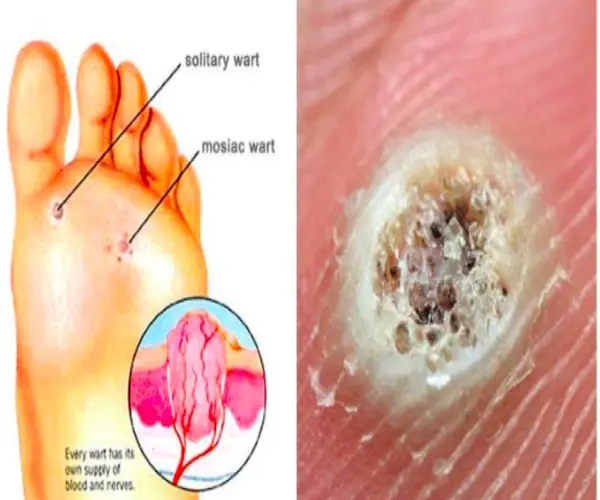Warts
Warts
Plantar warts are a common viral skin infection caused by the human papillomavirus (HPV). These warts develop on the soles of the feet, often on weight-bearing areas, and can be painful due to the pressure applied when walking or standing. They typically appear as small, grainy growths with black dots (clotted blood vessels) and may be mistaken for calluses.

Plantar warts can spread through direct contact or walking barefoot in public areas. While they often resolve on their own, treatment may be necessary if they cause discomfort. Options include over-the-counter remedies, cryotherapy, laser therapy, or surgical removal by a healthcare professional. Preventive measures include good foot hygiene and wearing protective footwear in communal areas.
Warts FAQs
What are plantar warts?
Plantar warts, or verrucae, are benign skin growths caused by the human papillomavirus (HPV). These warts specifically appear on the soles of the feet, primarily on weight-bearing areas like the heels or the balls of the feet. They are characterized by their flat, grainy appearance, with pinpoint black dots, which are clotted blood vessels within the wart.
What causes plantar warts?
Plantar warts are caused by the human papillomavirus, which enters the body through tiny cuts, abrasions, or breaks in the skin. HPV strains that lead to plantar warts are highly contagious and can be contracted through direct contact with an infected person or by walking barefoot in public places, such as locker rooms, swimming pool decks, or communal showers.
What do plantar warts look like?
Plantar warts have distinct characteristics that set them apart. They typically appear as small, rough growths on the sole of the foot, with a tendency to develop inward, due to pressure from walking or standing. One of the most noticeable features is the presence of tiny black dots on the surface, which are capillaries that have bled into the wart. Plantar warts can range in size from a pinhead to larger than a pencil eraser and may cause discomfort or pain when walking.
What is the treatment for plantar warts?
Several treatment options are available for plantar warts. Over-the-counter treatments containing salicylic acid can be effective for some individuals. Cryotherapy, which involves freezing the wart with liquid nitrogen, is another common approach. For more stubborn or painful warts, laser therapy or surgical removal by a healthcare professional may be necessary. Your doctor will help determine the best treatment based on the wart’s size, location, and your overall health.
How can I prevent plantar warts?
Preventing plantar warts involves taking a few precautions:
Plantar warts can be a nuisance, but with proper care and attention, they can be managed effectively. If you suspect you have a plantar wart or have concerns, consult a healthcare professional for guidance and treatment options.
Request An Appointment
Need Help With Your Foot And Ankle?
